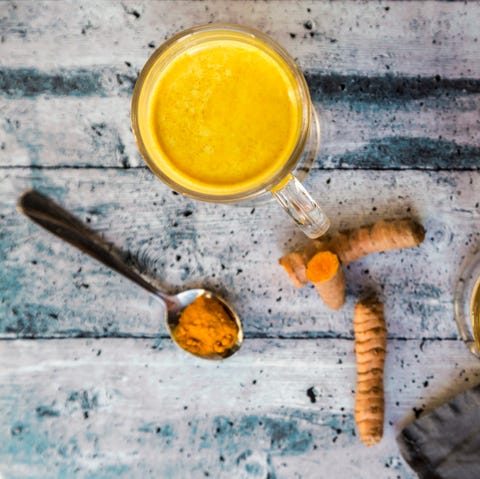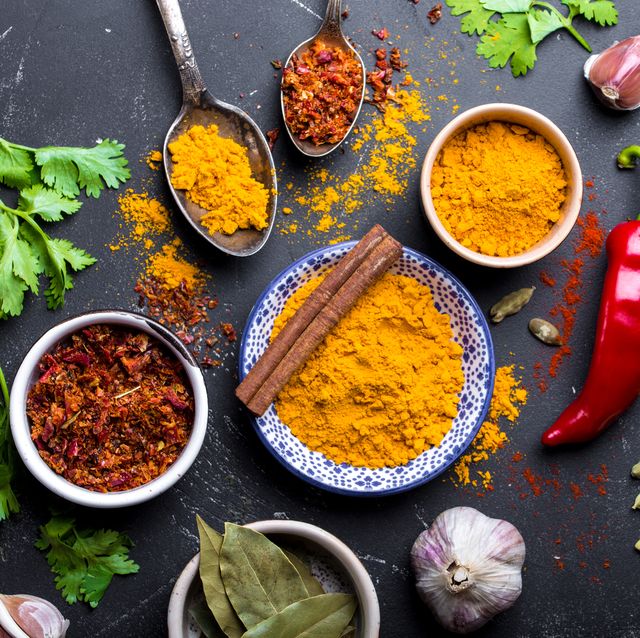Ayurvedic Diet for a Week and Here is What Happened
IT’S FAIRLY well-established that not every weight loss plan works for everyone.
In fact, whether or not you can successfully lose weight depends on many factors, from your gender to your metabolism to your genes. But what if you were told that your body type and your overall mental makeup also play a role?
Well, that’s the core principle behind Ayurveda (pronounced eye-yur-vayda and translated to “science of life”) Medicine, a holistic wellness system of beliefs that originated in ancient India nearly 3,000 years ago.
Recently, wellness gurus have been dipping back into Ayurvedic texts to come up with the principles for the Ayurvedic Diet, which ostensibly uses Ayurvedic principles to help you lose weight.
I wanted to try the diet. My late, great mom, who was born and raised in Mumbai, India, always used spices like turmeric and ginger in her own cooking. When she passed last summer, I took it upon myself to dabble with some of those spices in my own cooking.
Sometimes when I cook, I feel like my mom is guiding my hands through. It’s a special connection, and the fact that Ayurveda originated in India made this diet/lifestyle resonate with me that much more.
With all of this info in mind, I decided to try the Ayurvedic Diet for myself.
OK…what, exactly, is the Ayurvedic Diet?
AT THE root of Ayurveda is the belief that everyone has a set body type and energy that comes along with it. This is called your dosha.
According to Kate O’Donnell’s Everyday Ayurveda Cooking for a Calm, Clear Mind (which I used as my bible of sorts for this experiment), the three doshas are vata, pitta and kapha.
Vatas tend to be thin, lean creative types (bizarrely, they often tend to suffer from cold hands and feet).
Kaphas tend to have wider bodies and rigidly loyal tendencies, but sometimes suffer from foggy thoughts.
In the middle are pittas, who have medium builds and are highly motivated.
Each are equipped with specific bodily traits and energies associated with them that supposedly sync with the five elements of nature, including earth, water, fire, space and air.
It’s important to note that Ayurveda lacks a medical or scientific basis, meaning there’s pretty much zero actual proof that any of this, ya know, works at all. But it does encourage being mindful of your daily eating habits, avoiding processed foods, and being conscious of your mental health and wellness, all of which have been linked to weight loss.
What can you eat on the Ayurvedic Diet?
WELL, THAT depends on your dosha.
Ayurveda doesn’t place any hardcore restrictions on your diet, but it does stress being more mindful of your choices and eating according to your dosha.

WESTEND61
Vatas, pittas and kaphas are encouraged to eat fresh, cooked food that is heavily spiced and easily digestable. Vatas are a cold and dry dosha, so they’re encouraged to eat foods that are warmer, heartier, and richer in oils; pittas are encouraged to eat drier, more carb-heavy foods; and kaphas lean towards smaller portions.
If you’re trying to follow an Ayurvedic diet, identifying your dosha should be your first step. The Ayurveda Experience has a quick three-minute quiz to help you ID yours.
While the questions may seem silly (the quiz asks, among other things, whether your veins are visible, or if your joints make a cracking sound when you walk), the ultimate goal is to personalize your health and weight loss plan, according to Dr. Kulreet Chaudhary, MD.., a neurologist and author of the weight loss manual The Prime.
“What is unique to Ayurveda is that we never make the same dietary recommendations for everyone,” Chaudhary says. “In other words, some people would do very poorly with a raw diet; some would do poorly on a vegan diet; some would do poorly on a juice fast. Ayurveda takes your individual constitution into account before making any dietary recommendation. In this way it’s very personalized.”
“What is unique to Ayurveda is that we never make the same dietary recommendations for everyone.”
Alan Marks, the CEO of vpk by Maharishi Ayurveda Products International, told me that people who follow the Ayurvedic Diet are encouraged to go light on breakfast or skip it altogether, go light on dinner, and make lunch their heaviest meal of the day. This runs counter to most conventional weight loss advice, which encourages people trying to lose weight to get most of their calories in the A.M.; further, there seems to be some debate in the Ayurvedic community on whether or not skipping breakfast is OK. But Marks explained that there are drawbacks to loading up on calories in the evening, which most people tend to do.
“When we eat our largest meal at dinner, we’re sending two competing signals to our body,” says Marks, who has followed the Ayurvedic lifestyle for more than 35 years. “We’re telling it, ‘When I go to bed, I want to settle as deeply as possible and get as much rest as possible, but I also want to digest food.’ So people who eat a really large dinner don’t get as deep of sleep.”
Regardless of whether the Ayurvedic Diet works in general, this particular takeaway is actually (kind of) supported by science: eating too much too late has been linked to lower-quality sleep, and a number of studies have found that people who pack in the calories at night are more prone to metabolic issues, which can lead to weight gain.
Armed with the knowledge of how the diet worked, and how it might work for me, I set off on a week of cooking and eating, Ayurvedic style.
Sunday
To start the week, I took the online quiz on the Ayurveda Experience to ID my dosha. I’ve always been on the skinny side (in fact, my problem has always been trying to gain weight, not to lose it), plus I’m definitely a creative, so I was immediately pegged for a vata, which meant I was encouraged to use spices such as turmeric, ginger, and cinnamon when cooking.
(These spices have some well-established health benefits: turmeric, which is often used in Indian cooking, has notable anti-inflammatory properties, and ginger is often used to treat nausea).
Unfortunately, I didn’t have a light breakfast or a heavy lunch, so this day was kind of a write-off. I vowed to start the diet in earnest tomorrow.
Monday
I wanted to keep the start of the work week simple and clean. So I started the day by enjoying my typical breakfast, steel-cut oatmeal with blueberries, which felt light enough. For lunch, the heaviest meal of the day, I went with oven-roasted chicken thighs and some garlic sautéed spinach; for dinner, I made pan-seared tilapia. Nothing fancy, but it was definitely a vibe for me.
Tuesday
As a freelance writer, my life can get pretty unpredictable, so when I had to head out the door to cover an event, the “mindfulness” aspect of the Ayurvedic Diet crumbled. I grabbed a strawberry pastry from a bakery in Queens on my way to the subway that morning and treated myself to a lobster roll in Manhattan that evening. Those were the only things I ate that day, so that was not good.
Wednesday
On Wednesday, I wasn’t hungry, so I skipped breakfast. For lunch, I ordered Pad See Ew Thai noodles, which came with spring rolls and a salad; for dinner, per Marks’s advice, I grilled a cod fillet. It was simple, light, and delicious.
Thursday
I’m lucky to have grown up on what I consider some of the best Indian food ever (thanks, mom). But since she passed, I haven’t eaten much Indian food, just because it’s not the same as mama’s.

Still, with this experiment, I got a little bit nostalgic. So per O’Donnell’s book, which contains a recipe for lentils daal, I called a local Indian spot to pick up a dinner plate of lasooni daal, a.k.a. yellow lentils covered in a garlic sauce and served over a plate of fragrant, savory Basmati rice. Per the guidelines for the diet, it was actually pretty light for dinner—at least, lighter than the chicken slice of pizza I took down for lunch.
Friday
I had a big bowl of oatmeal with blueberries for lunch, just to see how that would sustain me as a midday meal in lieu of breakfast. I also had a mango lassi (a delicious, creamy yogurt Indian drink, pictured above). For dinner, I went lighter with tilapia, which is one of my favorites.
To my surprise, even though this was my third straight day of skipping breakfast, I felt totally fine. So much for breakfast being the most important meal of the day.
Saturday
Although I was out with my daughter all day Saturday, I still managed to somewhat adhere to the flow of the Ayurvedic diet. I once again skipped breakfast and made lunch my biggest meal of the day (although, to be fair, my lunch was a burger, which is not the healthiest option). For dinner, I made us pan-seared cod with buttery garlic sauce … which she loved.
The Results
WHEN I started the Ayurvedic Diet, Marks predicted that I’d feel more energized and alert by the end of it. While this might just be placebo effect (and while I admittedly didn’t do a great job sticking to the diet at first), I must say that I did feel both of those things—especially from Wednesday through Saturday, when I made lunch my first and heaviest meal of the day, followed by a lighter dinner.
Sure, I didn’t lose any weight, but because I’m already a pretty lean guy, I wasn’t exactly trying to, which made the diet a success for me.
Marks say that “Ayurveyda honors that people eat the food that they’re comfortable with,” and for the most part, I felt like it really did. I never failed to be mindful of the food I ate and how it affected my body, and if you’re trying to lead an all-around healthier lifestyle, I think that’s super important.






